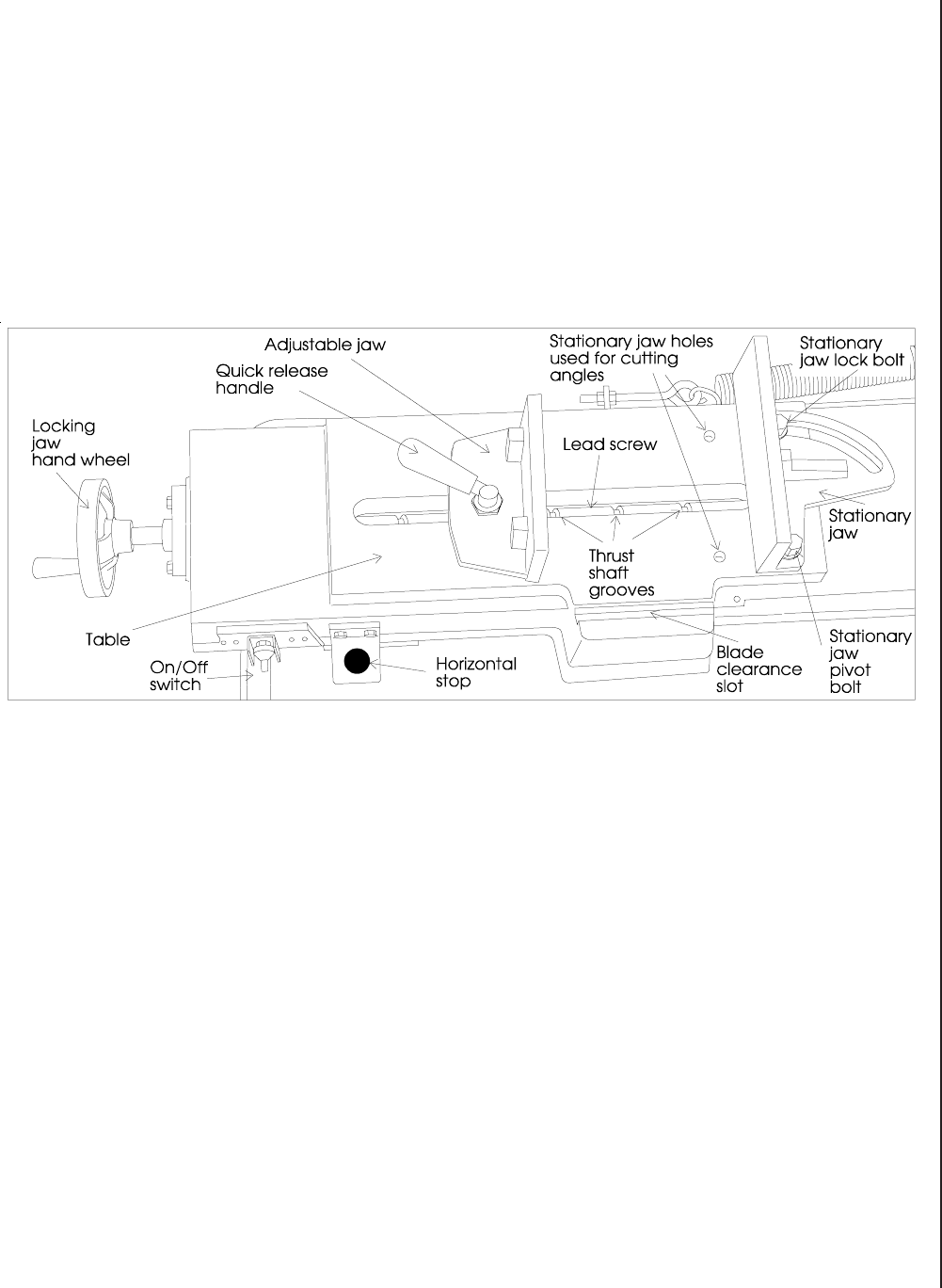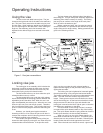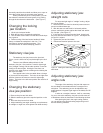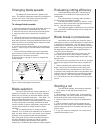
7
Operating Instructions
Using the vise
The vise on the saw table has two jaws. The jaw
closest to the right hand side of the table is the stationary
jaw. This jaw is firmly secured to the table using its pivot
and lock bolts. When making a straight cut the stationary
jaw is at right angles to the saw blade. When making an
angle cut, the stationary jaw is first loosened, then
adjusted to the desired angle, then secured to the table,
again.
The jaw closest to the left hand side of the table is
the locking jaw. This jaw clamps the workpiece against the
stationary jaw to hold it securely for cutting. The locking
jaw can pivot to conform to the angle of the work piece
which is held in the stationary jaw.
Before cutting can begin, the vise must be properly
set and positioned. The procedures are different for right
angle cutting and for angle cutting. Setting procedures are
given in the following sections.
Figure 1: Vise jaw nomenclature
Locking vise jaw
The locking jaw is an assembly which includes the
lead screw nut which encases the lead screw, the lead
screw shaft (which screws into the lead screw nut,) the
thrust shaft, spring, and quick release handle.
The thrust shaft moves up or down when the quick
release handle moves up or down.
The thrust shaft has a nut under the quick release
handle which adjusts the clamping pressure between the
adjustable jaw and the table, itself. When this nut is too
tight, the adjustable jaw cannot pivot. When this nut is too
loose, the jaw can pivot, and also tilt upward. Therefore,
this nut should be slightly loose. This will allow the jaw to
pivot an conform to any angle at which the stationary jaw
is set.
However, you should guard against excessive
loosening of this nut. If too loose, the jaw can tilt when it
contacts the workpiece and full clamping pressure cannot
be effectively applied to the workpiece.
If the shaft is too tight to allow pivoting of the jaw,
loosen the shaft slightly by turning the nut under the quick
release handle counterclockwise. If the jaw tilts exces-
sively, use the nut under the quick release handle to
tighten the shaft slightly so the jaw slides easily, but flat
against the saw table.
The locking vise jaw is tightened or loosened against
the workpiece being cut by using the lead screw handle.
The handle is attached to a lead screw underneath the saw
table. The lead screw has a series of grooves on its
length. These grooves capture a thrust shaft on the lower
side of the locking jaw. As the lead screw handle is turned,
the grooves move to the left or right, and therefore the
locking jaw is moved to the left or right to open or close the
jaw against any workpiece on the table.
The thrust shaft on the locking vise jaw is a compo-
nent part of the quick release handle on top of the locking
jaw. This quick release handle is spring loaded to force the
handle (and, therefore, the thrust shaft) downward.
When you pull up on the quick release handle, the
thrust shaft is removed from its groove. This allows you to
slide the jaw to a new position on the table. Releasing the
handle pushes the thrust shaft against the lead screw
shaft. When the lead screw handle is turned, a groove will


















